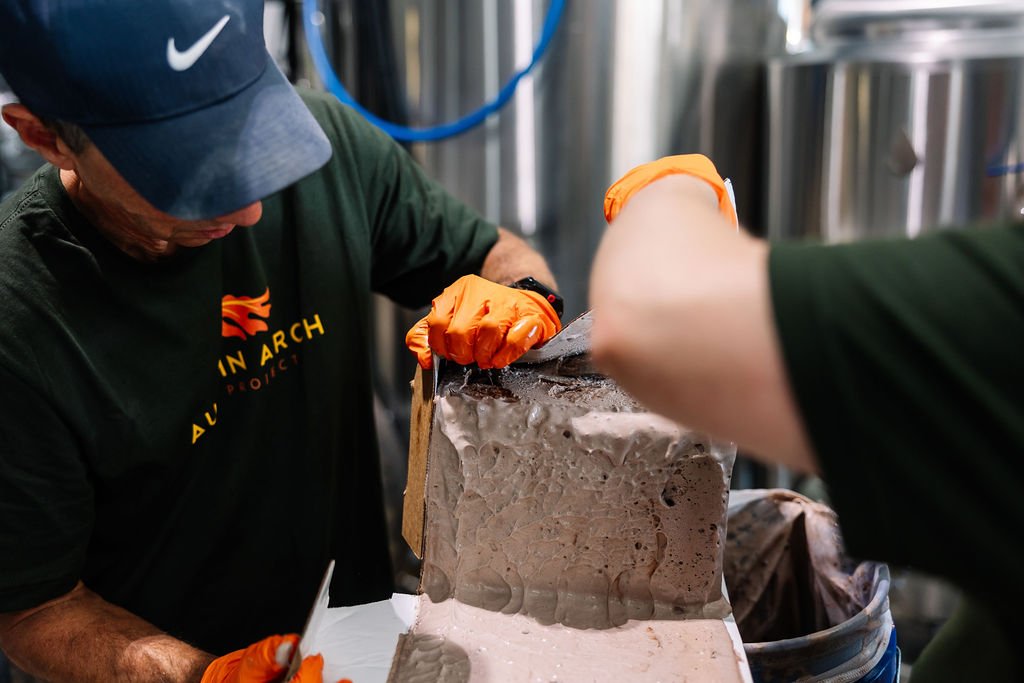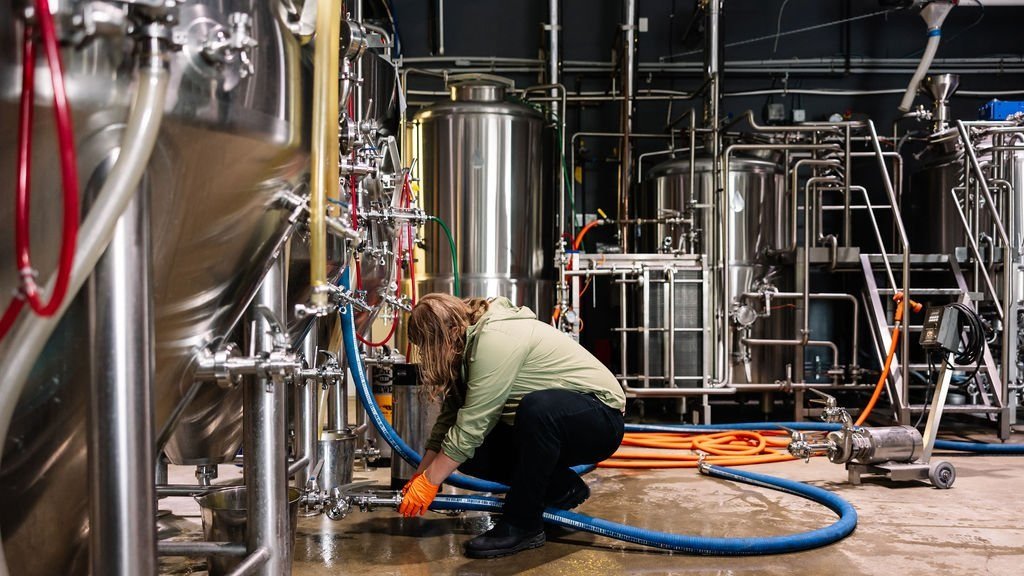The original 2021 DelaWeAre Collab
The pandemic was a really tricky time for a lot of brewers, especially in Delaware where most brewers are small and strongly rely on taproom sales. Obviously, when restaurants were forced to shutter so were brewery taprooms. I distinctly remember (in both awe and terror) April 2020: Autumn Arch had barely been open a year, we were inexperienced business owners facing an enormous revenue loss, and the future was far from certain.
We marched through that spring and limped into fall which was when a few Delaware brewers got together (virtually, of course) with an idea for a collaboration beer supporting the Delaware Brewer’s Guild, our non-profit advocacy group that does work advancing (and sometimes defending) craft beer initiatives in Delaware. The Guild was instrumental in working with the governor’s office in early 2020 to secure take-out sales and then later helping to craft clear guidance for breweries to open in a limited way. This was huge for small brewers.
Adding the ‘Delaware River Mud Pie’
The original 2021 version of DelaWeAre was a take on the classic IPA and individual brewers put their personal spin on the recipes. We canned our DelaWeAre IPA that year (and it had a totally rad label).
This year, we are putting a new twist on the state-wide collab. Brewers are creating beers under the DelaWeAre name that personifies what Delaware beer means to them. For Autumn Arch, this meant: (1) something strongly tied to the seasons (autumn is our namesake after all), (2) linked to something in Delaware that had an impact on us (both Dan and I are UofD grads), and (3) spending some time on oak.
Is there anything that screams fall more than a stout? Pumpkin spice fans, put your hands down.
Enter our DelaWeAre Beer: a decadent imperial stout, barrel-aged in a Painted Stave bourbon barrel (Smyrna, DE), and loaded with ‘Delaware River Mudpie’ ice cream from the UDairy Creamery. Truly, a winning combination of stout, oak, bourbon, and ice cream. It’s one of the loveliest beers we have on tap at the moment. And it’s only at the Autumn Arch taproom.
Drop by soon and tell us what you think about our DelaWeAre beer and all the others around the state!
Justin finishing up the brew day…







